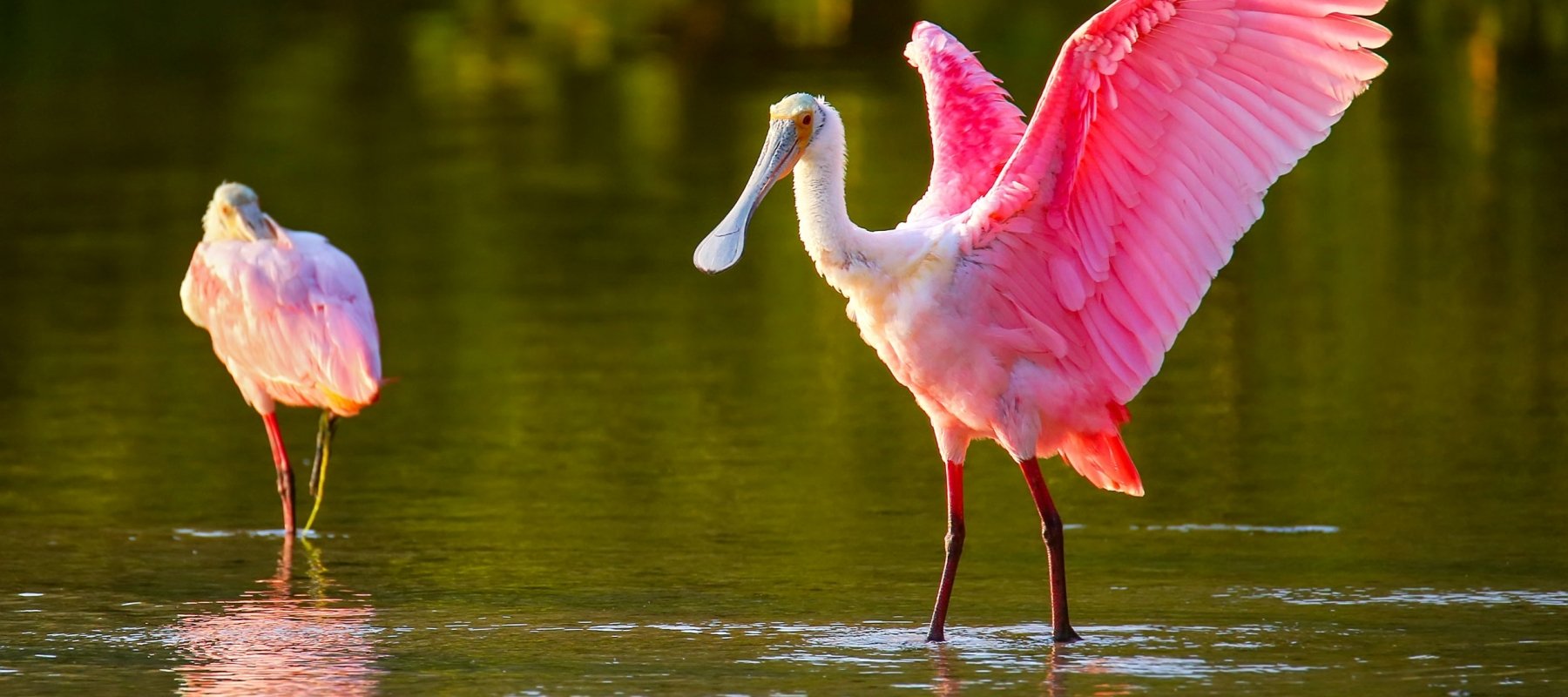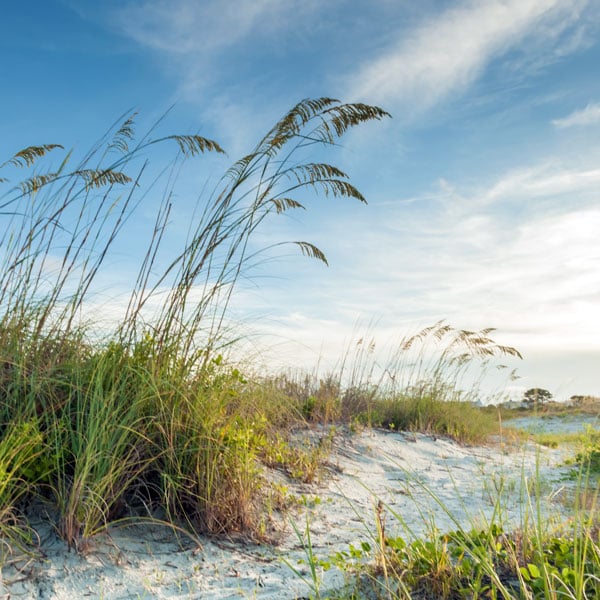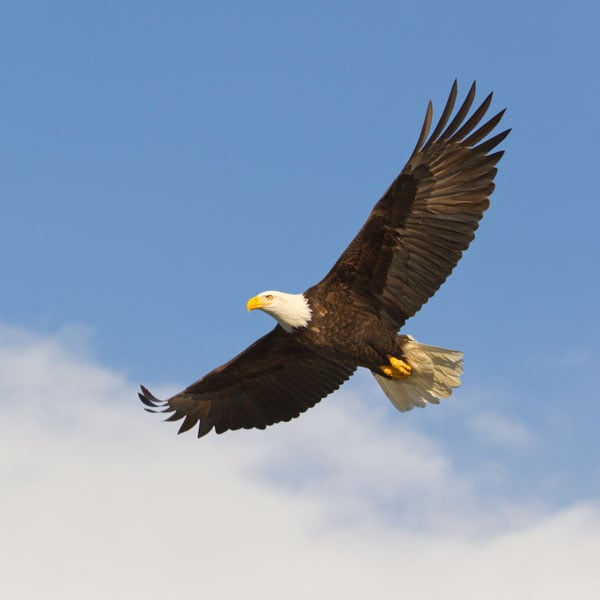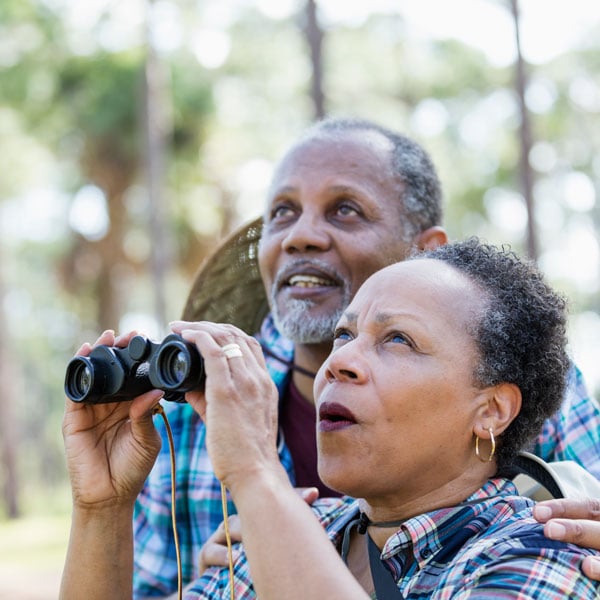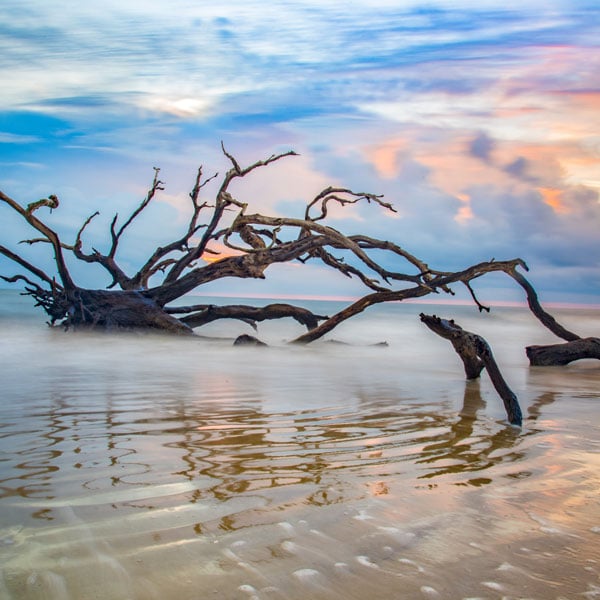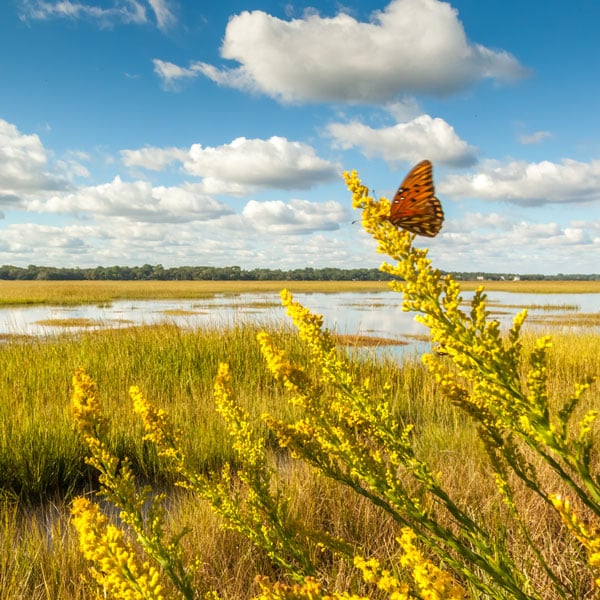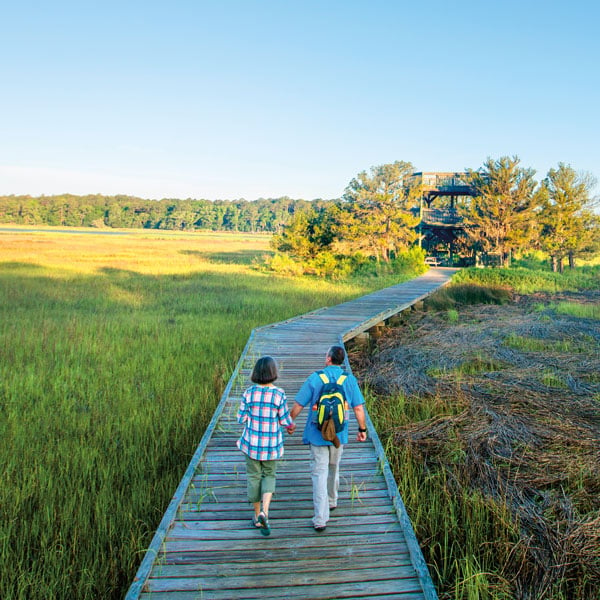Georgia’s Golden Isles—a string of barrier islands basking in the Atlantic sunlight just north of Florida—have much to commend them. From the aristocratic splendor of Victorian country estates and Civil-War forts to miles of protected beaches, wetlands, and coastal forest, it’s a naturalist and history buff’s dream. Add a healthy dose of southern hospitality and the rich flavors of Lowcountry cuisine and you’ve got a Georgia peach of a vacation: sweet and sunny days dripping with Southern charm and draped in Spanish moss.
But even beyond these many highlights, there’s one special feature of this region that makes it a must-visit for a certain segment of the population. Recognized by the American Bird Conservancy as an Important Birding Area, Little St. Simons and Jekyll islands are on the Atlantic Migratory Flyway and host some 330 full- and part-time species, from bald eagles to roseate spoonbills. Here’s an overview of the region’s birding hot spots.
Goose Pond, Little St. Simons Island
Recipe for a perfect morning: arise before daybreak at your island lodge and set off through the pre-dawn coolness to the bird blind at Goose Pond. As the sun rises, the world around you bursts into life, with dozens of species flitting about, preening themselves, and skimming the water’s surface. From your prime vantage point, the variety is staggering: herons, egrets, wood storks, black-necked stilts, glossy ibises, gull-billed terns, and brilliantly hued roseate spoonbills catching the sun’s first rays.
Driftwood Beach, Jekyll Island
Located on the northern tip of Jekyll Island, this otherworldly beach is dotted with starkly beautiful barren trees and exposed roots left behind by beach erosion. Strolling here, you’ll have the opportunity to spot a range of shore birds, including least terns, plovers, and sanderlings, as well as the occasional painted bunting. Enjoy time pondering this scene and wandering among the scarred, wind-sculpted arboreal beachscape.
Norm’s Pond, Little St. Simons Island
The rookery is the big draw at this freshwater pond, just inland from the island’s main beach. Wading birds flock here to nest, protected from predators by the pond’s resident population of American alligators. Climb the two-story observation tower to gaze down upon the nests of snowy egrets, anhingas, white ibises and black-crowned night herons, and to observe the courtship rituals of these feathered friends, complete with mating dances and showy displays of plumage.
Sancho Panza Beach, Little St. Simons Island
Little St. Simons’ seven miles of wilderness beaches are a spectacular site for watching shorebirds and waders. One especially idyllic stretch of shoreline is Sancho Panza Beach at the island’s northeast corner, where the mighty Altamaha River empties into the open Atlantic. Come just before and after high tide, when wood storks, pelicans, herons, egrets, cormorants, bald eagles, terns and gulls all congregate on the sandbars by the river mouth.

